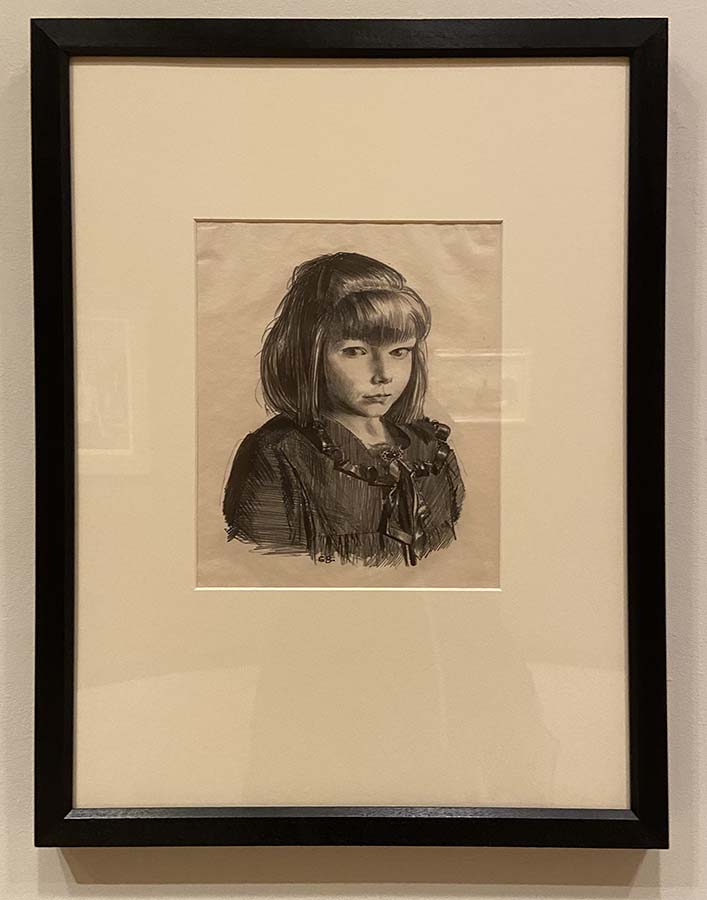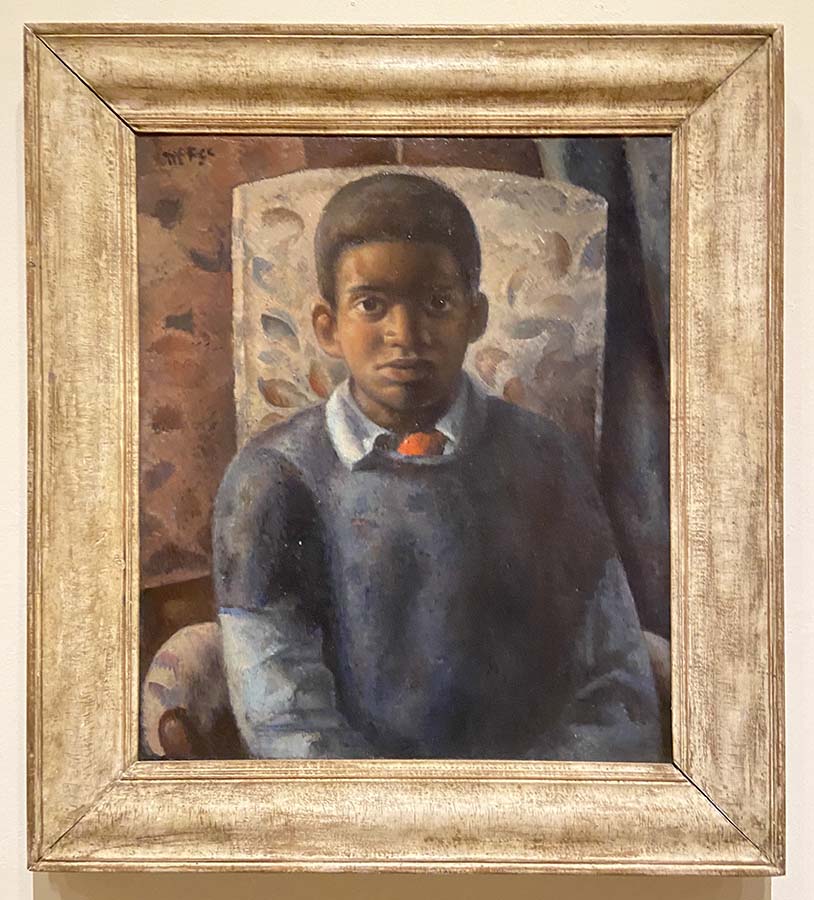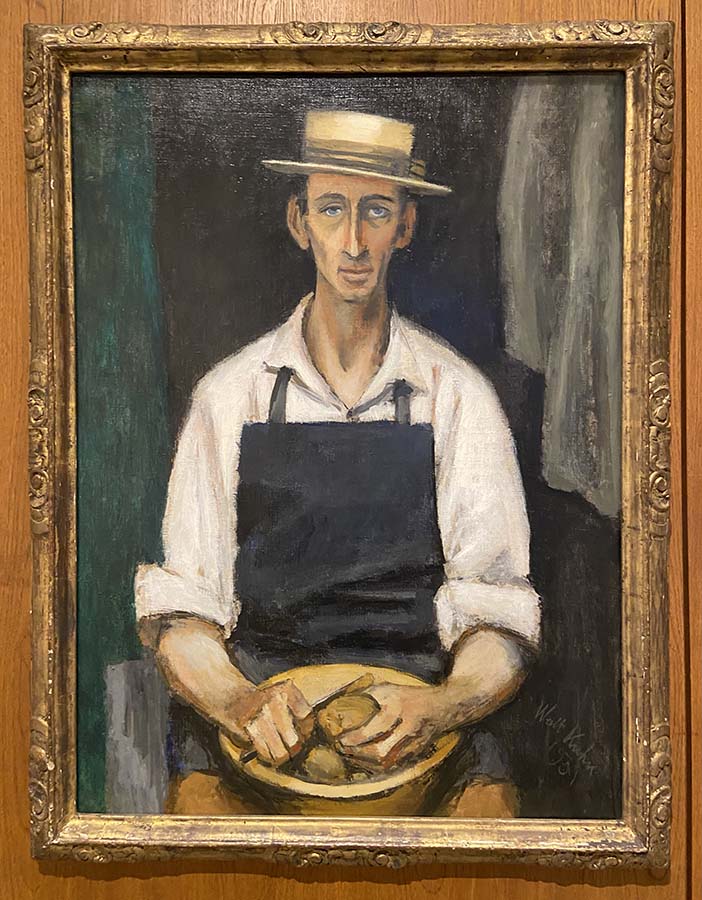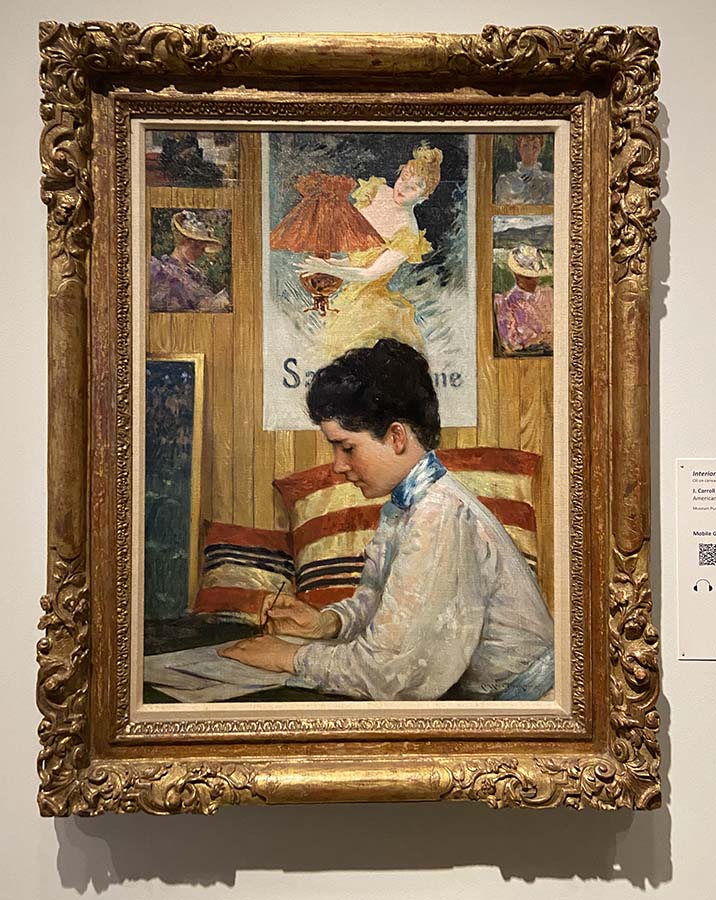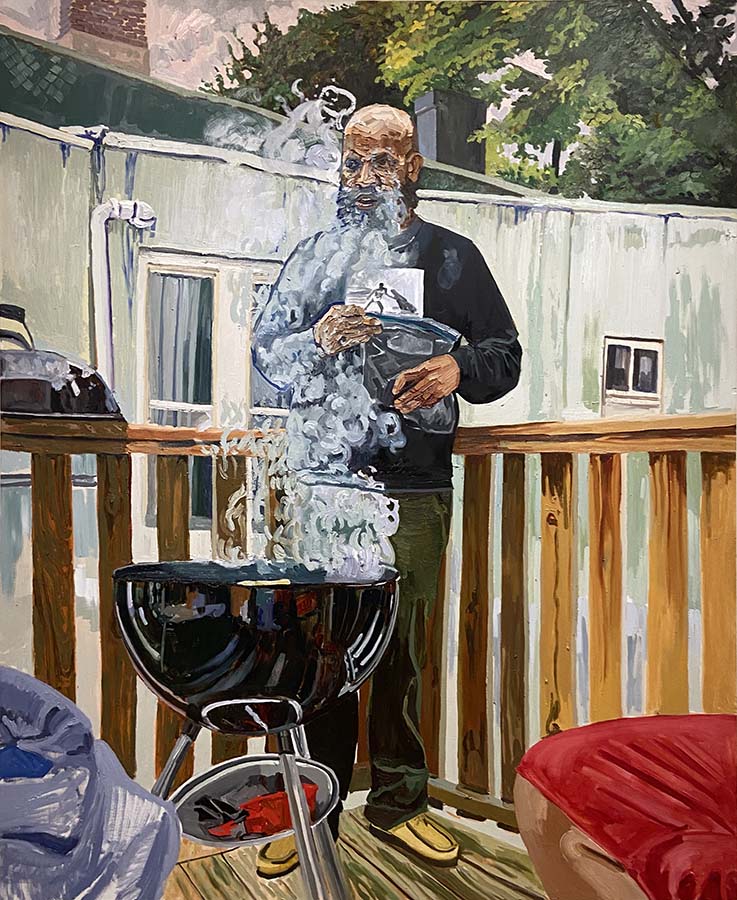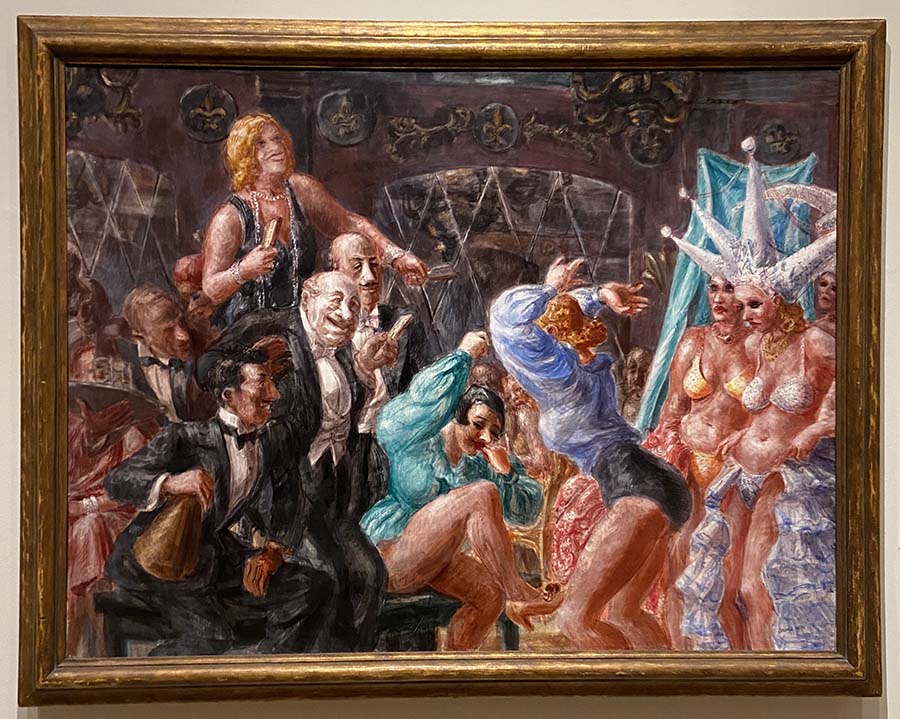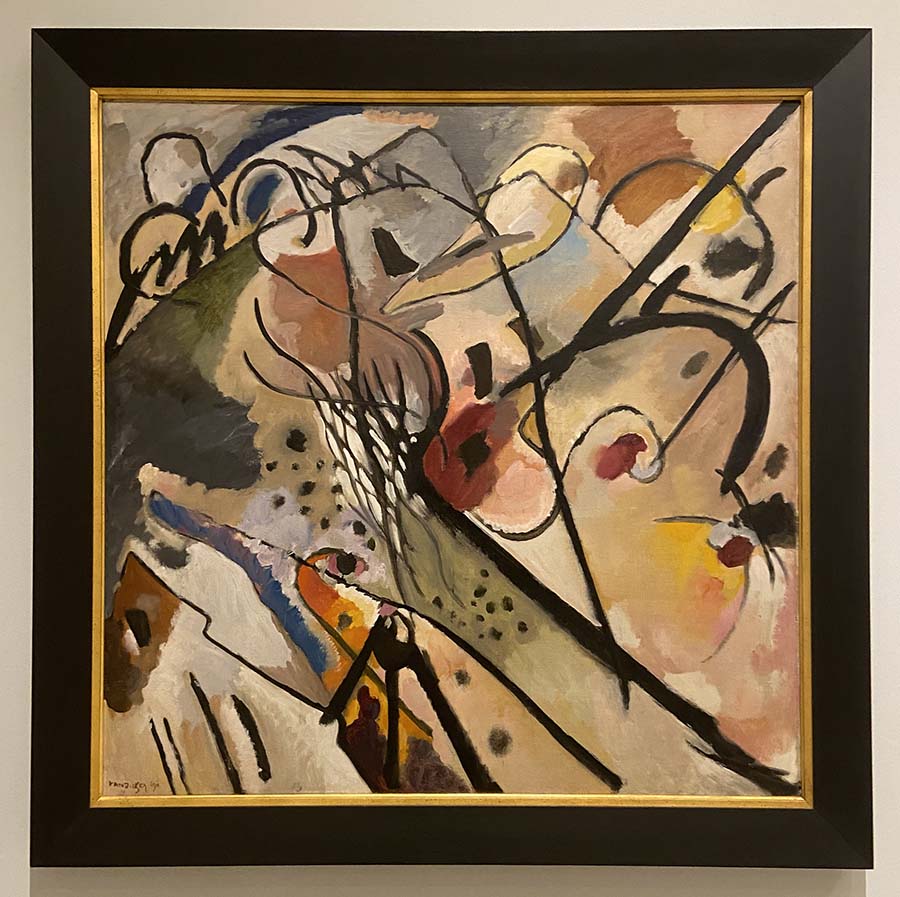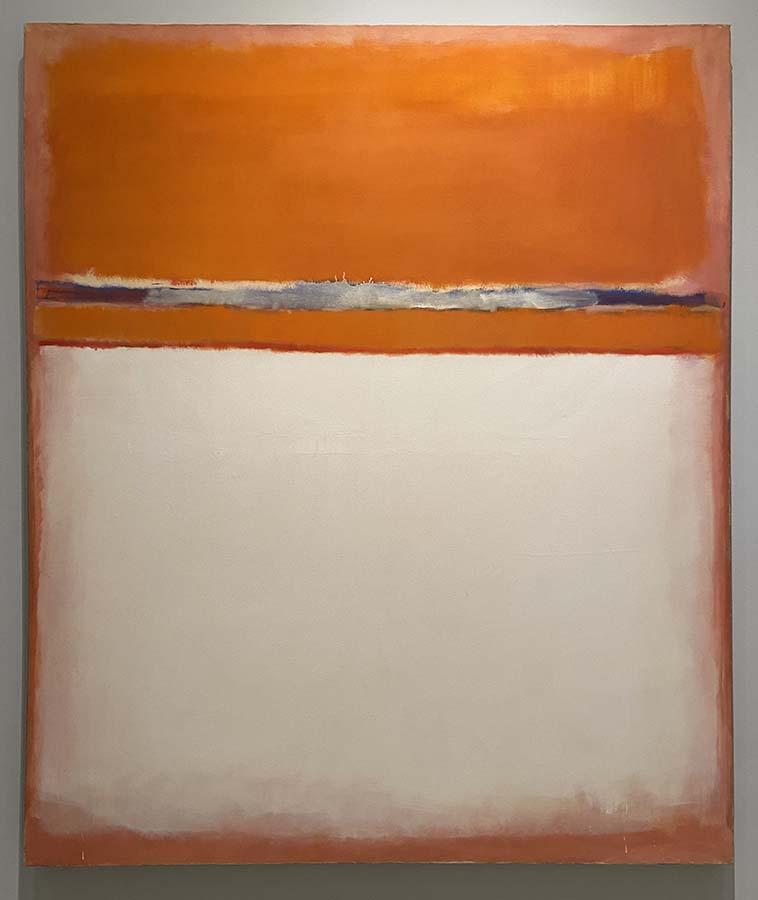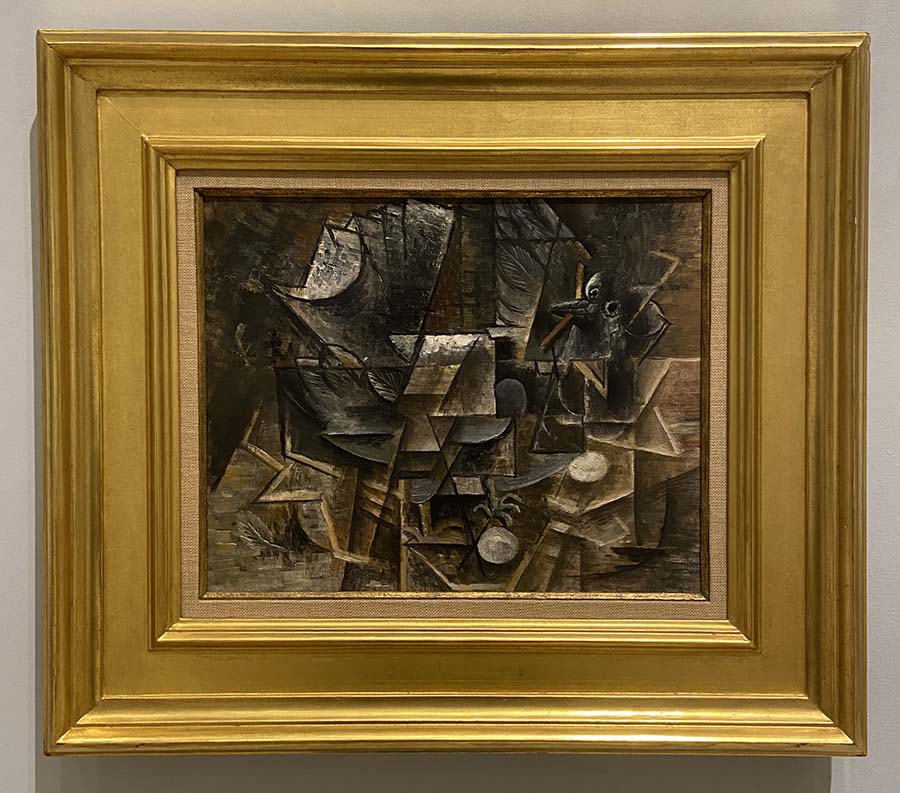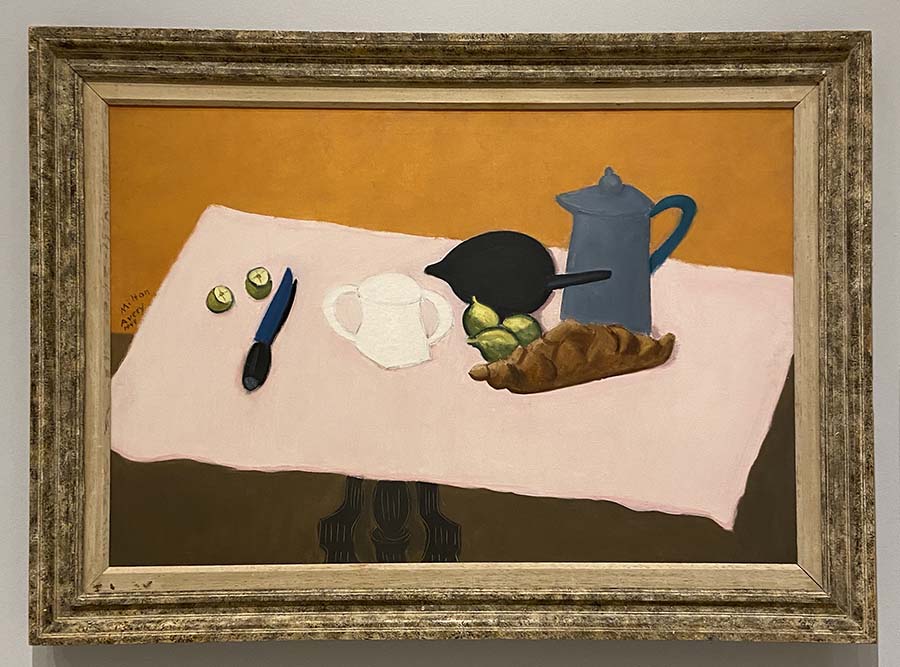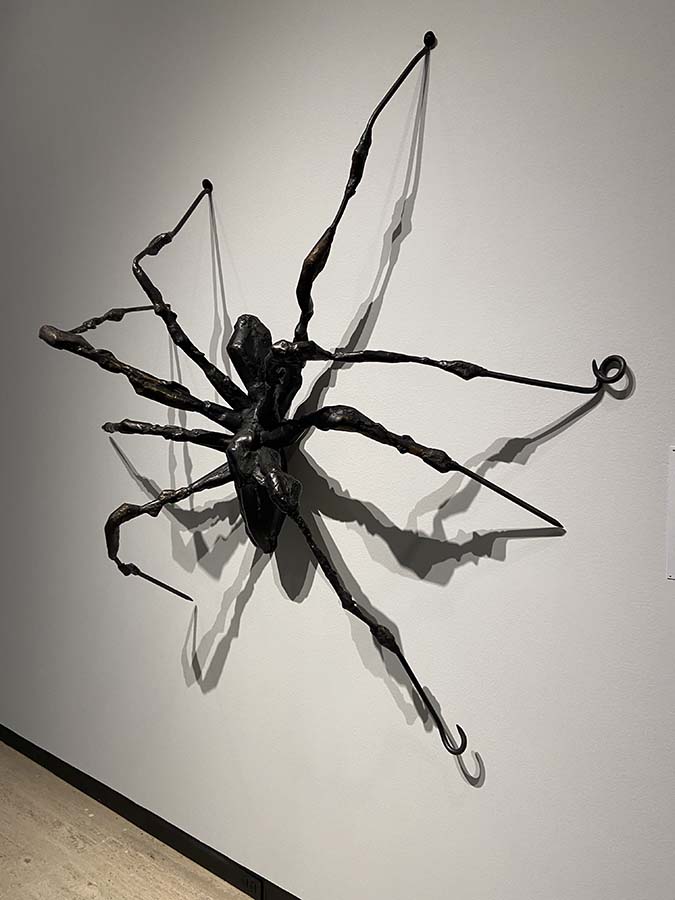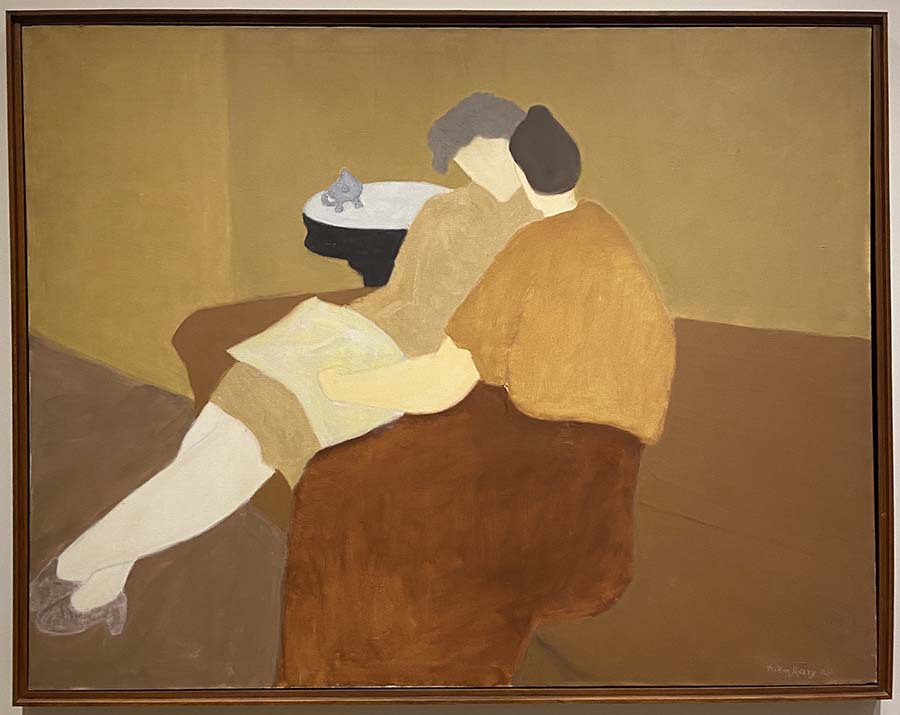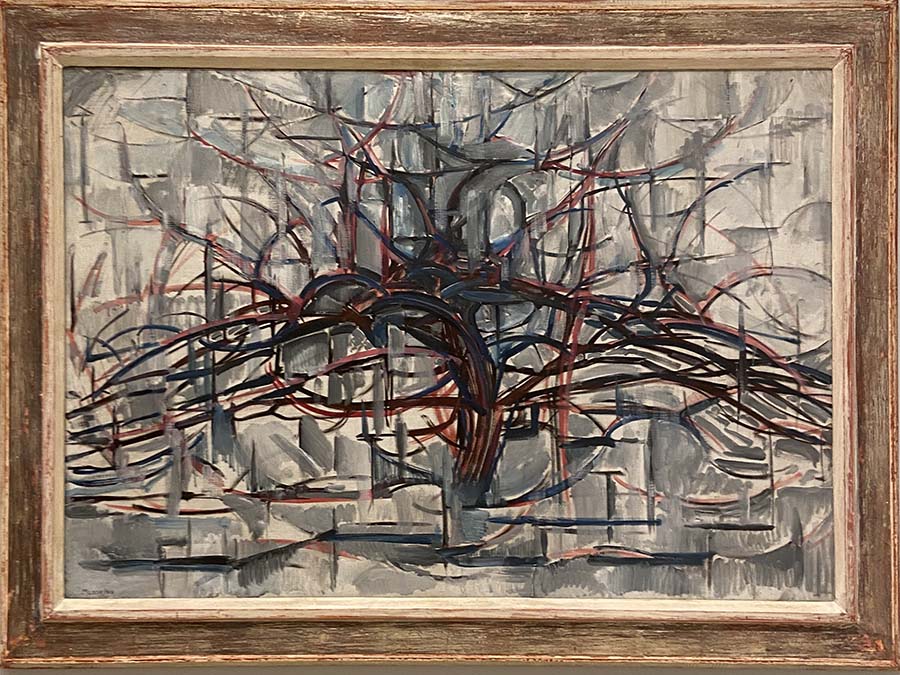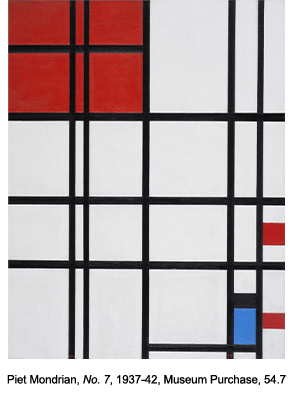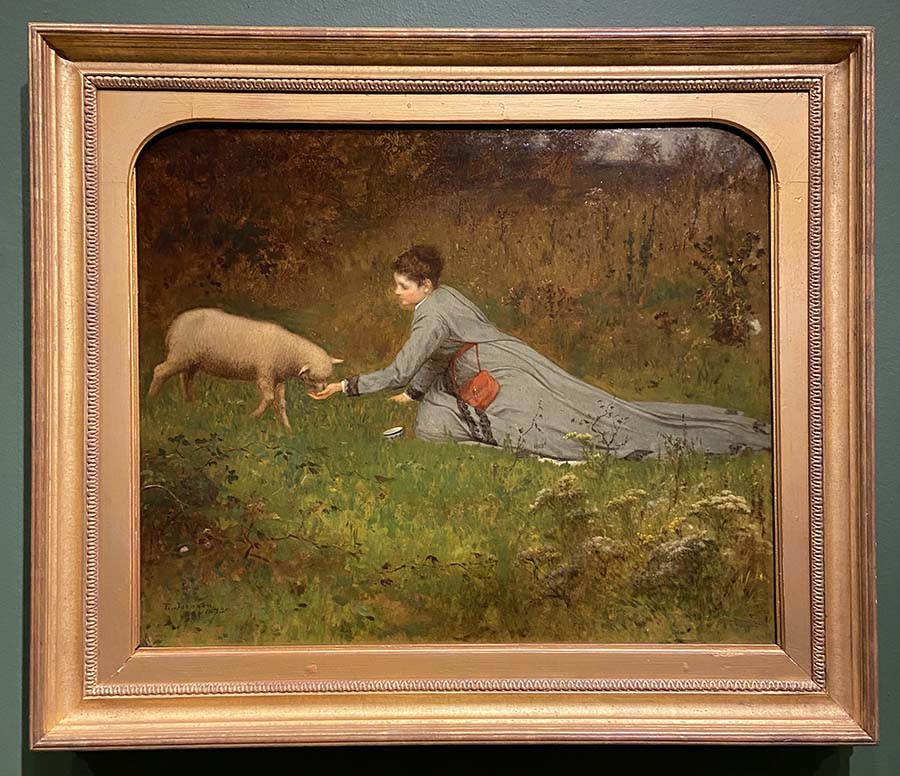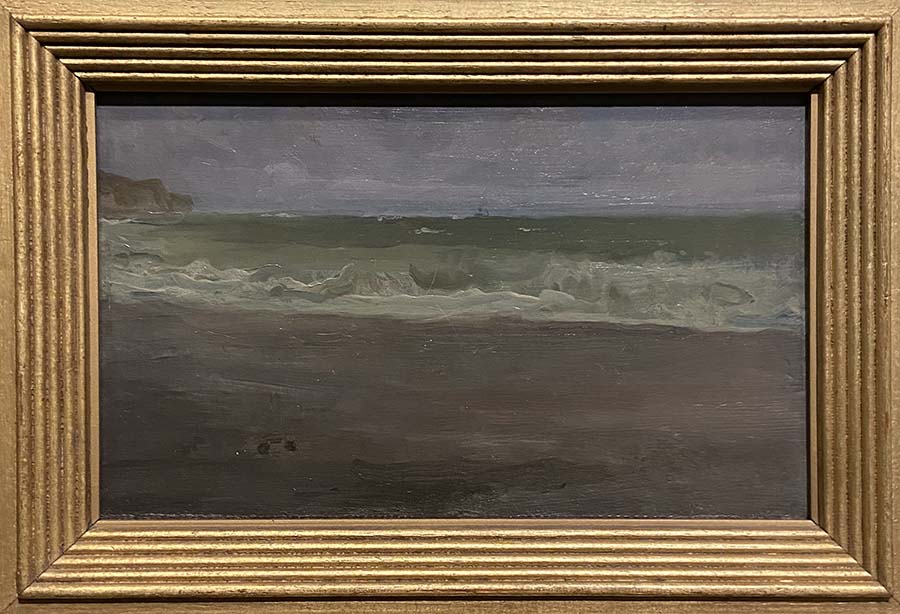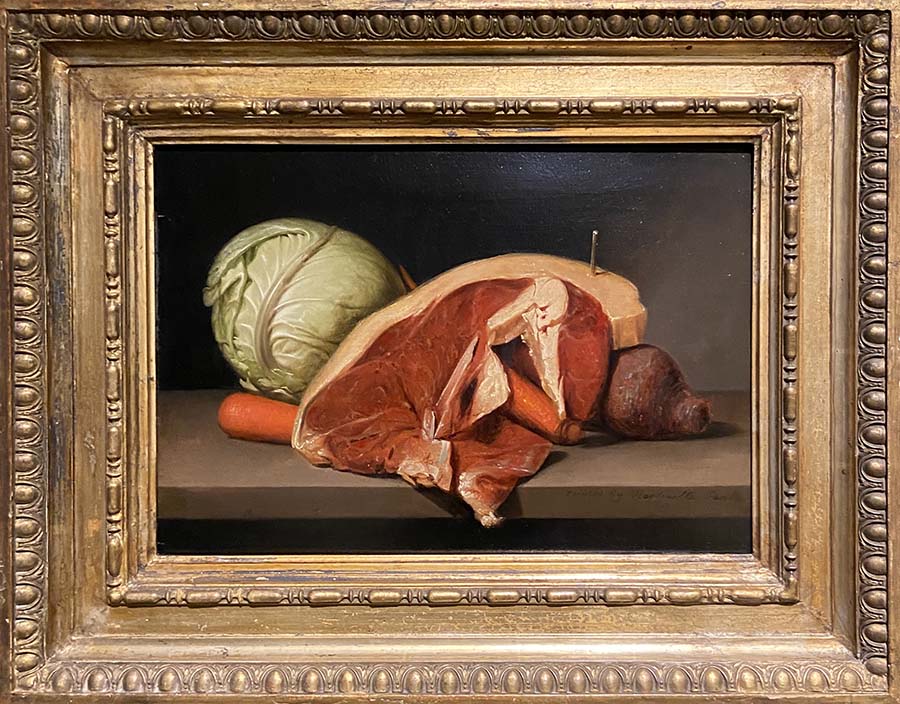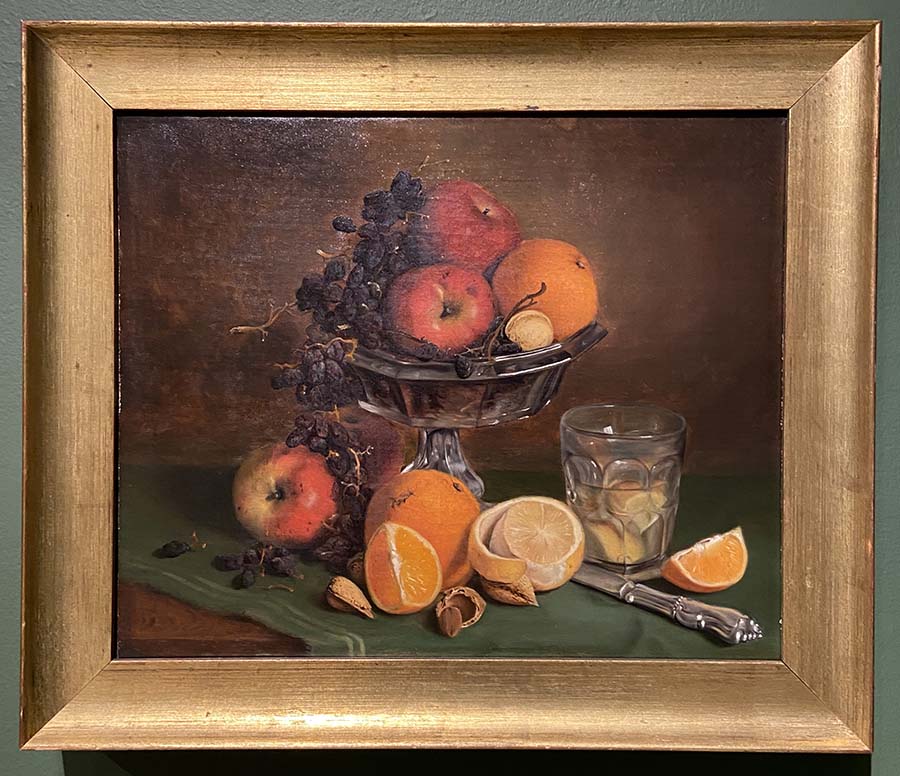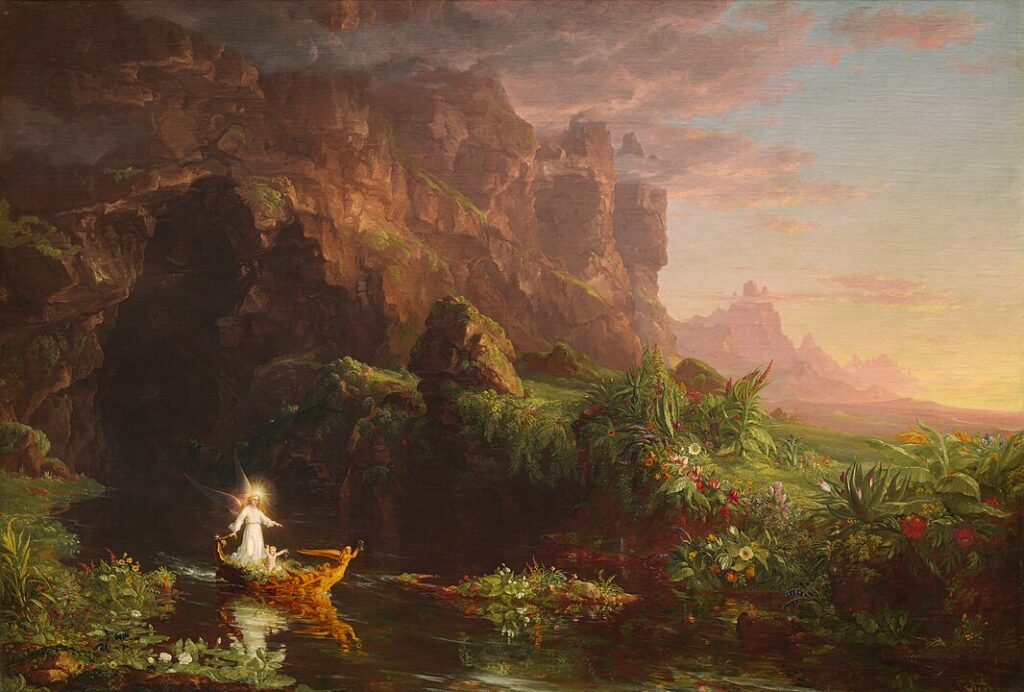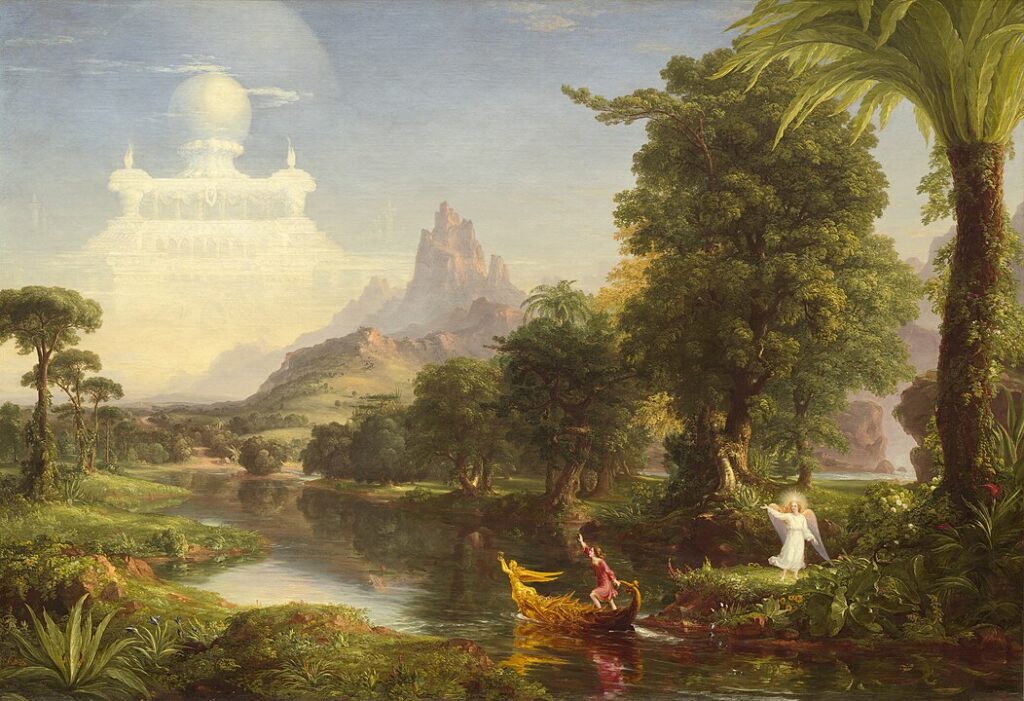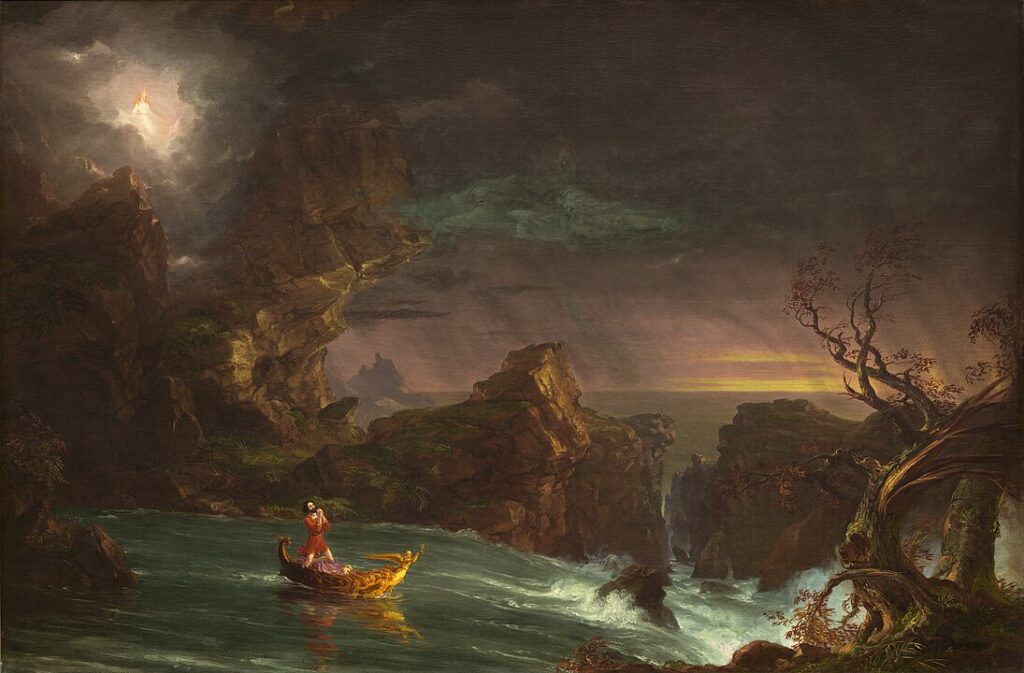Utica, New York
Whenever I have a long drive ahead of me I look for a stopping place to break up the drive. That’s how I learned about the Whistler House Museum of Art in Lowell, Massachusetts. This past February I had a 10 hour drive to Erie, Pennsylvania. Snow was forecasted so I knew I would have to spend the night somewhere on the way. Over half way to Erie sits Utica, New York. An internet search led me to the Munson, an art museum on the campus of the Munson Pratt College of Art and Design.
The Munson’s collection includes an impressive array of artists from a variety of periods in American art. I was especially looking forward to seeing the four paintings that make up Thomas Cole’s “Voyage of Life” series in person.
I arrived at 3PM on a dark Thursday. The snowy sky and bare trees, the empty asphalt parking lot, and the granite face of the museum itself made me wonder if the world had suddenly turned into black and white.
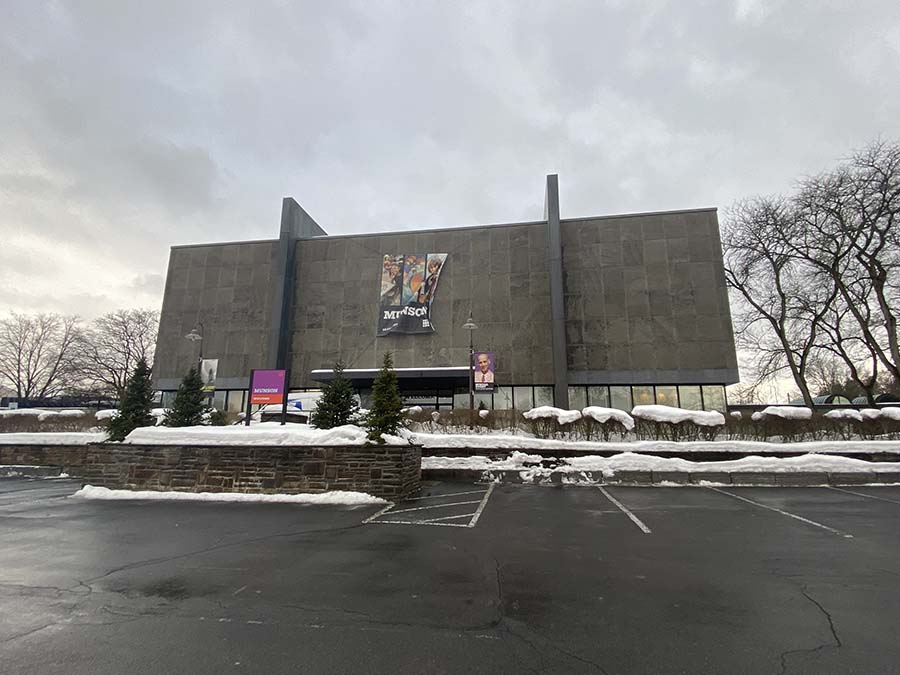
The dark granite International-Style building dominated the landscape and felt perfectly situated in the colorless Winter of upstate New York. I have to admit it did not feel welcoming after a 6 hour drive though the snow.
The first floor of the Munson has glass walls, which are designed to make the building look like it’s floating. Those first floor windows also make the interior of the Munson a warm, airy, comfortable contrast to it’s chilly exterior.
I should have realized from the empty parking lot I was not visiting the Munson during the busy season. The looks of surprise on the faces of the helpful people at the reception when I walked in was another clue. I was quite literally the only person in the museum who was not part of the staff. It was a pleasant surpirse to have the entire museum to myself.
A Celebration of Modern Portraiture
To get to the rest of the museum I had to walk down a wide cooridor to the right of the reception desk. This cooridor hosted an impressive collection of portriats, mostly from the 20th century. Portraiture is my favorite subject in art, and these paintings were a great introduction to the Munson.
I loved the different styles of portraiture hanging next to each other instead of being dispersed through different galleries sorted by time period or artist.
Here are a few examples (click images to enlarge):
Modern Name Dropping
The heart of the Munson is a large, two story open space flooded with natural light. It is rimmed with first floor galleries and series of Escher-like stair cases up to a mezzanine of 2nd floor galleries. Even though it was an inviting space, I was disappointed to see that the first floor galleries were closed for setting up new exhibits.
I went upstairs to the 2nd floor galleries and was greeted by a collection of the most recognizable names in modern art. The work that stood out for me among Picasso, Kandinsky, Gris, Rothko, Warhol and Pollack was “Tree (Horizontal Tree)” by Piet Mondrian.
Click on images to enlarge
Horizontal Tree by Piet Mondrian
Whether or not you know the name Piet Mondrian, you’ve probably seen his work. The irregular black on white grids with blocks of primary colors filling in seemingly random squares and rectangles have become ubiquitous in design, fashion and pop culture.
“Horizontal Tree”, painted in 1912, is a wildly expressive painting of branches mixed with a combination of primary and, mixed colors. The tree is against a background of loosely overlapping cubist shapes in shades of gray. It was not what I expected to see in a painting from Mondrian. It could almost be described as “messy” when compared to the work he is more widely known for. The Munson cleverly hung a more recognizable Mondrian, “No. 7”, across from it in such a way that you see “No. 7” first, making the surprise upon seeing “Horizontal Tree” even more extreme. It was fascinating to see the progression of Mondrian’s styles in these two paintings. The gray cubist background becomes the black and white grid. The red streaks in the branches become the blocks of solid color. I pictured him picking the twisted lines out of “Horizontal Tree”, straightening them, and arranging them carefully in an orderly fashion on the canvas of “No. 7”, almost as if he was organizing his brushes.
18th and 19th Century American Painting at the Munson
I felt like I missed a good portion of the Munson’s collection of American art and sculpture because of the first floor galleries being closed. Fortunately they had one gallery of American painting on the 2nd floor. The gallery displayed a variety of landscapes, portraits, and still lifes by well known early American artists I was excited to see in person.
As I was the only visitor in the museum at the time, the staff had plenty of time to come say hello and talk to me about some of the work on display. One of the docents became excited when I told her I was from Portland and pointed out a beatiful landscape by Frederic Edwin Church, “Sunset.” She told me it was painted during one of his many trips to Maine.
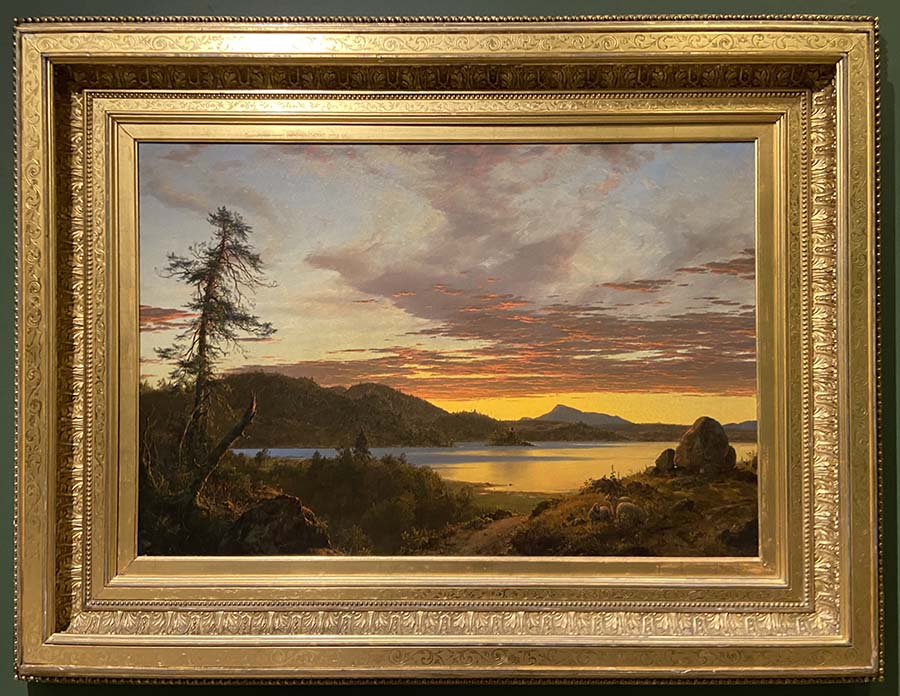
Two other paintings with connections to New England were “The Pet Lamb”, 1873 by Maine native, Eastman Johnson, and “The Seat Pourville (No. 2), near Dieppe, France”, 1899 by Massachusetts native, James McNeill Whistler.
Click on images to englarge
One of the still life paintings that drew me in with its incredible depiction of a raw piece of meat was “Still Life with Steak,” painted by Raphaelle Peale in 1816-17. Raphaelle Peale was part of the Peale family of successful early American artists which included their father, Charles, and his brothers, Rembrandt and Titian.
The other still life was a beautiflly painted depiction of fruit in a silver bowl with a glass of water. Simply called “Still Life,” wit was painted between 1860 and 1870 by Sarah Wilhemina Wenzler. Not a lot is know about her, however she does have one of her paintings hanging in the National Gallery.
Click on images to enlarge
Thomas Cole’s Voyage of Life
Thomas Cole is considered America’s first important landscape painter and founder of the Hudson River School art movement. In the 1840’s he set out to create a four part allegorical series of landscape paintings he called, “The Voyage of Life.” The paintings were well recieved by critics and the public alike. A set of engravings were made from the paintings. The combination of Cole’s fame, his talent as an artist, and the allegorical subject matter made “The Voyage of Life” even more popular during a resurgence of religious activism in the United States starting in the 1850’s. Cole painted two sets of these paintings, the second one is in the National Gallery of Art in Washington, DC. The first set is in the Munson.
Unfortunately I was visiting the Munson while the four paintings were not on display as they were being hung for a show specifically featuring The Voyage of Life and it’s cultural impact. I didn’t know when I’d get back to Utica so I asked one of the staff if it would be possible to at least get a quick look at them.
She asked me to wait, and a few minutes later introduced me to the Munson’s Director and Chief Curator, Stephen Harrison. He very kindly led me into the closed gallery. The four paintings that make up the Voyage of Life, Childhood, Youth, Manhood, and Old Age, were already hung and well lit while the rest of the pieces were still waiting for their places on the wall.
Mr. Harrison graciously took the time to explain to me in detail what Cole was attempting to convey with each painting and how he used the subject matter to achieve that. He also explained how this exhibit was going to explore the artistic influence and cultural impact “The Voyage of Life” has had throughout the years.
Click images to enlarge
Why Should You Visit the Munson?
While this blog focuses on fine art in New England, I wanted to include my visit to the Munson because if you read this blog, and you’re a fan of American art, then the Munson is worth the trip, especially if you live in western New England. (The Munson is less than 3 hours from Springfield, Massachusetts.)
Because I arrived late I didn’t even get to see the Fountain Elms. Fountain Elms is a restored Itallianate mansion that houses the Munson’s decorative arts collection as well a gallery for rotating exhibits by visiting artists.
After spending time on their website, munson.art, upon my return home, I realized there was so much more interesting art I was unable to see. I am already planning my return trip to see everything that I missed.
